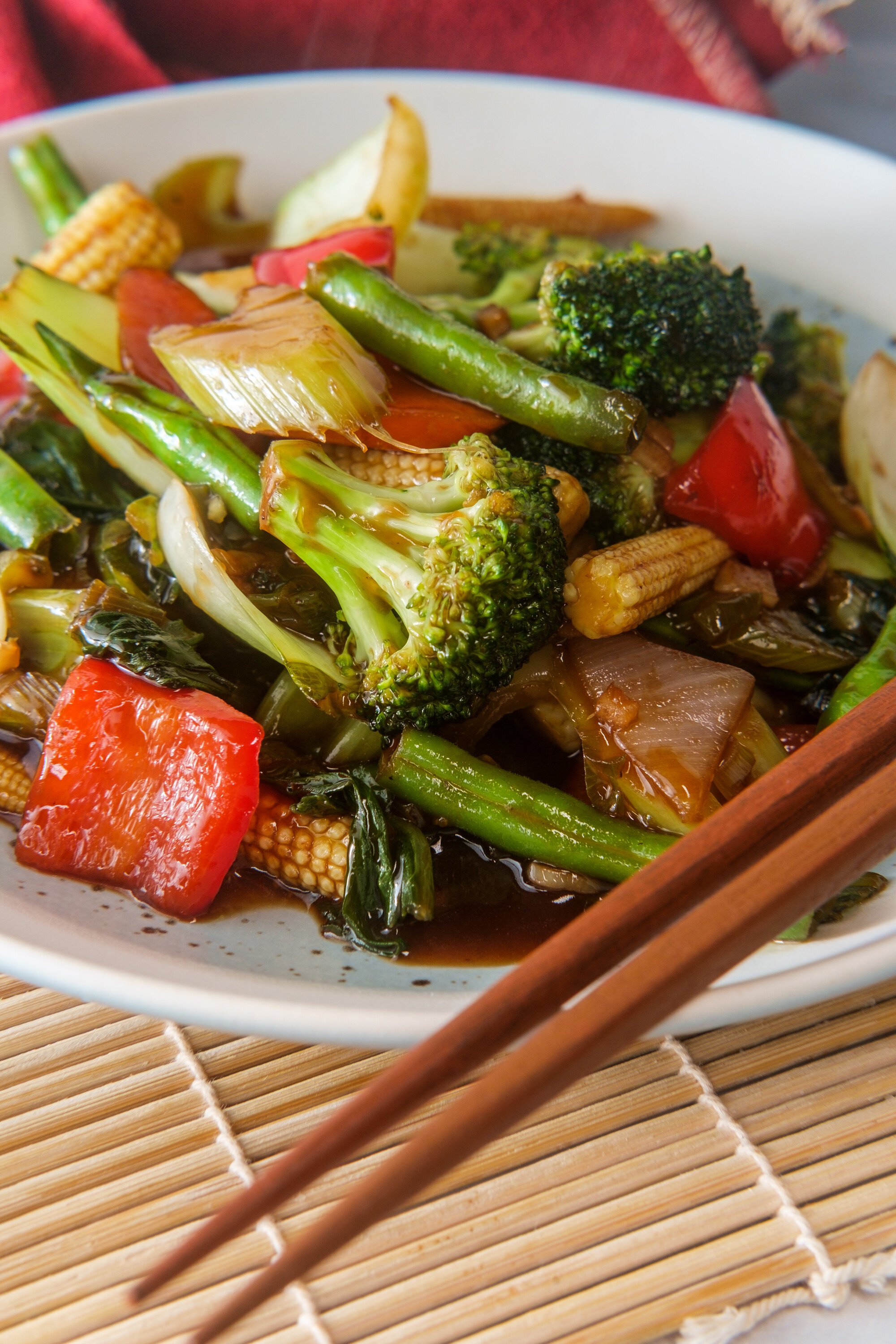Like My Grandmother Used to Make: Buddha's Delight
Continuing in our series of recipes from Govanhillians, poet Sean Wai Keung offers up a take on Buddha’s Delight just in time for Chinese New Year.
By Sean Wai Keung
Buddha’s Delight
Buddha’s Delight is just one of many traditional dishes eaten at Lunar New Year by Chinese communities and families. It’s named after the meals eaten by Chinese Buddhist monks, and each cook has their own special vegetable combinations which expresses their personality. Normally the dish consists of a mixture of eight or more different vegetables, including at least a couple of rarer or more expensive ones to add to make the dish special. This recipe is just my version, but feel free to take or add in your own and to find your own veggie-combo that brings you joy.
Lunar New Year this year falls on February 1st. For me, this would usually mean making the trip to see my grandmother, or my 婆婆 (popo) as I would call her. Her birthday was also the 29th January, which depending on the year would sometimes be close enough to New Year to be cause for a double celebration.
Her love language was always food, and she took great pride in cooking the New Year feast for the rest of her family. Normally by the time I would see her she would already be in her kitchen, with a wok and a pan already on the go, her oven already turned on and her marinated duck hanging in the corner. The smell would be incredible, a mixture of sweet and warm and spicy that would make my mouth water.
There would be condensation on her kitchen windows to the point that it was like once I was in her house, the outside world didn’t exist anymore. Some years she would spend so much time and energy cooking that when it came time to eat, her eyes would struggle to stay open at the table. Afterwards, me and my cousins always had the job of washing-up, drying, and putting everything back in its normal place. By the time we finished, the condensation on the windows would have disappeared, and the outside world would once again be visible to us, marking the start of the new year.
Ingredients
2 tbsp neutral oil (vegetable or sunflower)
3 slices of fresh ginger
3 cloves of garlic, sliced
2 tbsp shaoxing wine (or cooking sherry)
1 tbsp dark soy sauce
1 spring onion, sliced
1 tsp sesame oil
Glass Noodles
Sliced Vegetables (you can use your own selection)
Mushrooms
Carrots
Napa Cabbage (also known as Chinese Leaf)
Wood Ears
Leeks
Black Moss
Chives
Baby Sweetcorn
Snow Peas
Method
Soak the glass noodles in a bowl of hot water.
Heat your wok over a medium-high heat, then add oil and ginger and let cook for about 30 seconds.
Add your sliced garlic and spring onions, stir, and then let cook for another 30 seconds.
Add your mushrooms, wood ears, black moss and carrots, stir again until a little reduced. Then add your Shaoxing wine or cooking sherry and fry for a minute.
Add your other ingredients, apart from the glass noodles, along with dark soy sauce and a sprinkling of water, then reduce the heat to medium, stir and cover. Allow to cook for 5 minutes.
Uncover your wok and turn heat to high. Strain some of the water from your glass noodles (not all of it though) and then stir it into the wok. Keep stirring until what remaining liquid there is evaporates.
This recipe appears in Issue 5 of Greater Govanhill. Get your copy for free from participating stores and cafés around the Southside now. Got a recipe to share? Email us at hello@greatergovanhill.com

